Modus provides comfort that people can see and feel in a place that requires enormous concentration. The aesthetic awareness of the Swiss Pritzker prize winner is evident in the designs of the facades, the structure of the spaces and the details in the furniture.
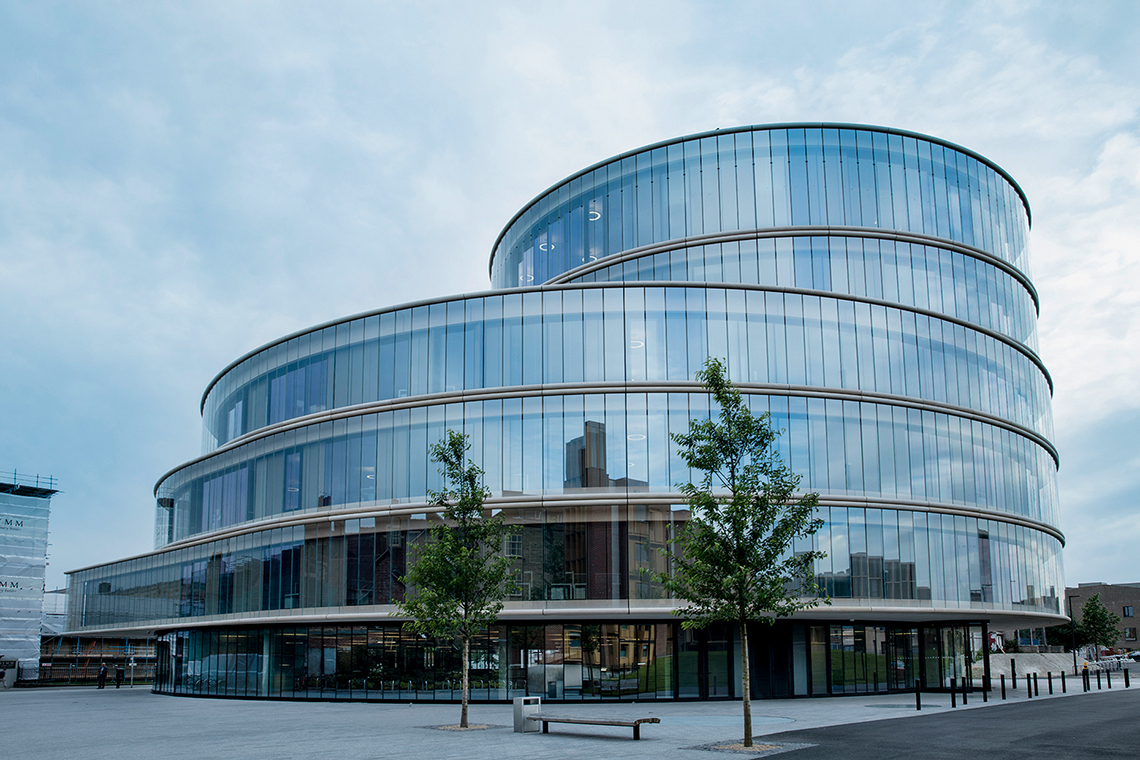
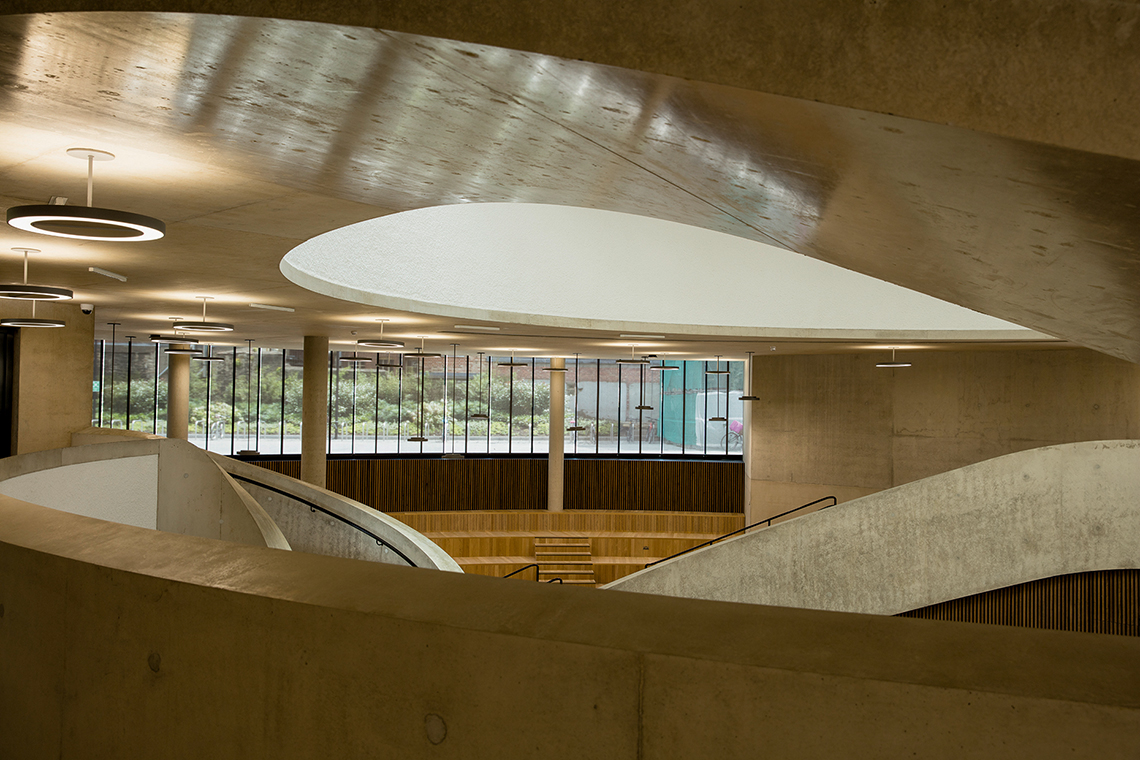
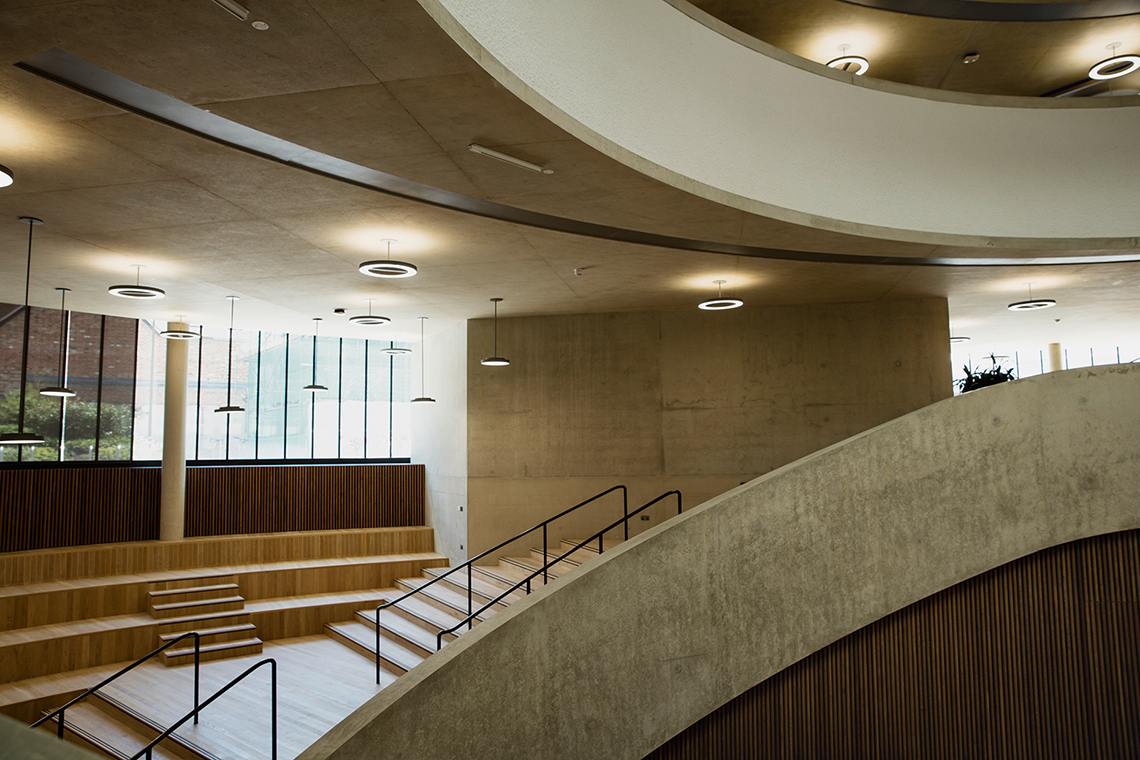
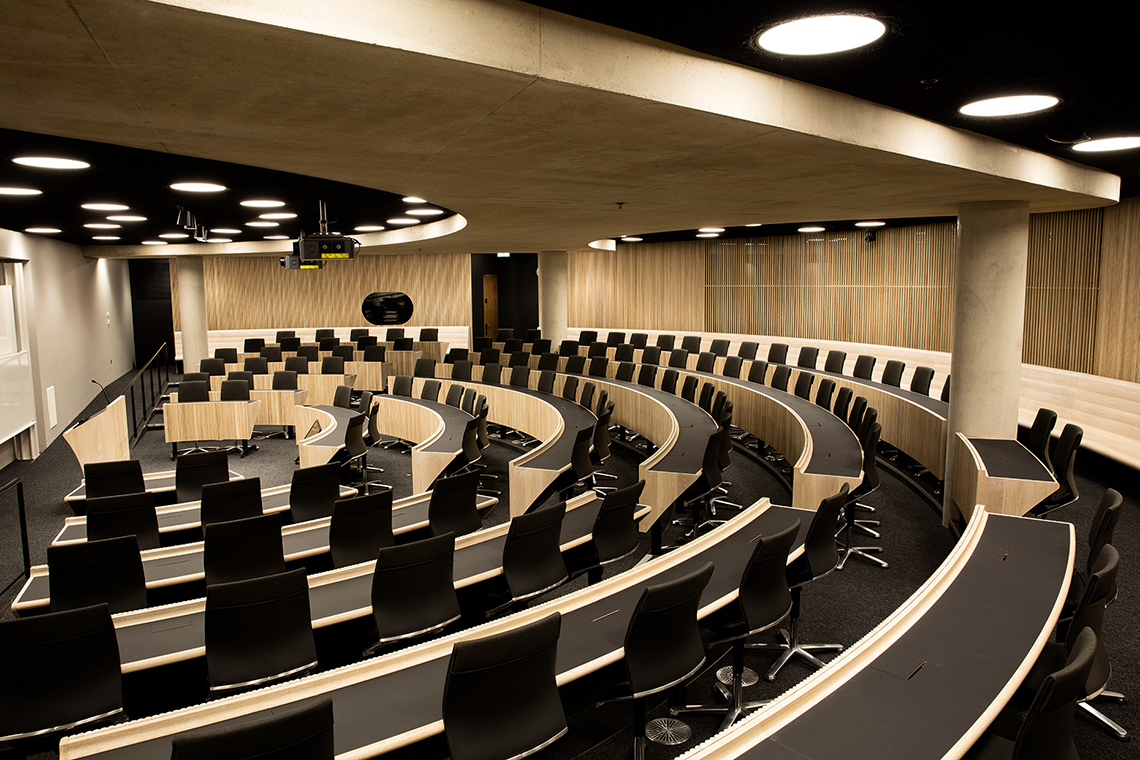
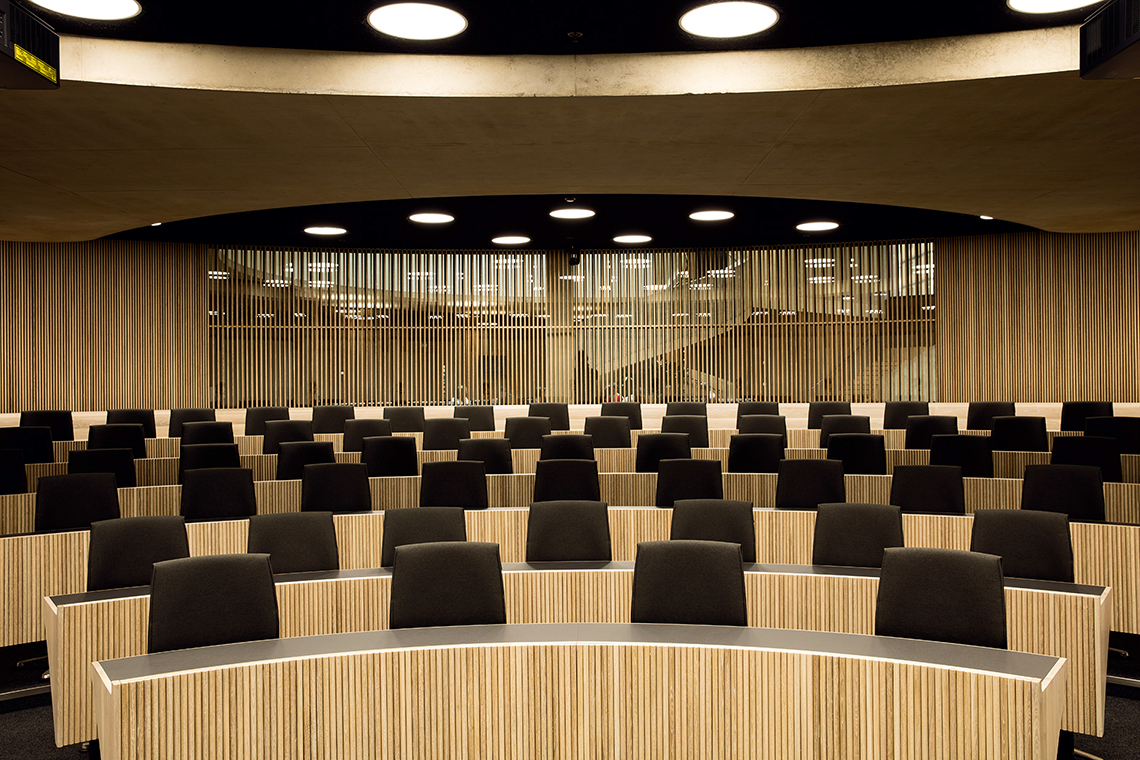
Blavatnik School of Government – a touch of class
It’s no coincidence that the Blavatnik School of Government on the campus of the top British university in Oxford is rooted in two traditional types of western democracy, the Greek agora and the amphitheatre. The school, which is an international centre of excellence for studies in government and public policy, was designed by the Swiss architects and Pritzker prize winners Herzog & de Meuron (Basel). In a setting which features very different architectural styles, they designed a building consisting of shifted discs. Just the circular geometry of the first floor is transformed into a rectangular form to address the historic setting. The central well of the building forms a generously sized open forum that connects all storeys vertically with one another. The result is a sculptural space of fluid elegance which is emphasised by sophisticated concrete and wood finishes.
To teach skills important in governmental roles, the school encourages students to communicate, to network and to apply an open approach. Therefore, the atrium doesn’t just lead to all other areas of the school, but also offers a number of different spaces itself. The galleries on each of the storeys around the centre well are designed as spacious tiers on which presentations, debates or workshops can take place. The ground floor has an auditorium on different levels, as well as a curved bench whose shape invites people to stop for a chat. All levels repeatedly include niches which are furnished informally and can therefore act as places for small-scale group exercises or discussions.
The concept of the open forum is enhanced by a variety of closed seminar and teaching spaces, as well as areas, primarily on the top storeys, where students can withdraw to and reflect on what they have learnt. The highlight of the teaching spaces is a closed, semi-circular auditorium where the atmosphere is defined by the contrast between light-coloured wood and dark finishes. Echoing classical amphitheatre, the shape of the room gives the audience a perfect view of the speakers and presentations. The audience’s concentration is also boosted by comfortable seating for which Herzog & de Meuron picked Wilkhahn’s classic Modus task chairs. The particularly comfortable and extremely compact automatic synchro-adjustment with torsion springs ensures the seat and backrest are lowered in perfect sync with people’s bodies. The stylishly shaped swivel arms made of high quality die-cast aluminium are both functional and distinctive design elements (design: Klaus Franck, Werner Sauer and wiege, Fritz Frenkler, Justus Kolberg).
The Blavatnik School of Government is a new door in a timeless design language to the neoclassical environment of the Radcliff Observatory Quarter on the Oxford campus. The premises are ideal in many respects for students who want to learn how to be responsible politicians and leaders. And office furniture manufacturer Wilkhahn is delighted that its seating clearly scores top marks elsewhere too. Because exclusive Yale University in the US also selected Modus for its new building by Sir Norman Foster.
Project: Blavatnik School of Government
Location: Oxford, GB
Architect: Herzog & de Meuron, Basel, CH
Wilkhahn ranges: Modus office task chairs
Completion date: 2015
Photography: Wilkhahn
